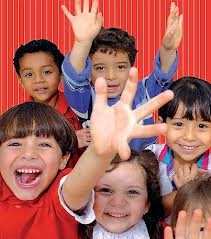[Biblioteca] Actividades para niños │Kids activities
El próximo sábado empiezan las actividades para niños en la biblioteca y ya tenemos 17 niños confirmados. Este sábado nos presentaremos entre todos, hablaremos de nuestros nombres, nuestras familias, leeremos un libro y haremos alguna obra de arte.
Saturday, February 2nd
Activities for kids begins next Saturday in the library. We already have 17 confirmed kids to attend the activity. We are going to introduce ourselves and speak about our names, our families. Then we will read a book and children will make artwork.
[Biblioteca] AMAZONIA PERU: Wild Adventure
Exposición del fotógrafo peruano Michael Tweddle Rayner
La Amazonía de Perú está entre las cinco mas biodiversas del planeta. El Perú contiene el 7% de las plantas con flor del mundo. Un ejemplo de esta asombrosa diversidad es Yanamono, una localidad amazónica cerca de la ciudad de Iquitos donde se han contado 300 especies de árboles en una sola hectárea de terreno, un record mundial!. En cuanto a fauna, Perú contiene el 8% de los anfibios del mundo, el 19% de las aves, el 10% de los mamíferos, el 5% de los reptiles, el 21% de las mariposas y la gran mayoría de esta diversidad está en la Amazonía. Perú es el país con más especies de mariposas en el mundo y el segundo en especies de aves. En lo cultural Perú posee 42 etnias cada una con su lengua propia, de ellas 40 son amazónicas. Casi nada… Estas etnias son actualmente las mejores conservadoras del bosque y poseedoras de un gran conocimiento sobre su uso en cuanto a manejo de recursos, medicinas, etc.
Extraido de un texto de Mario Rosina Barragán (ver texto completo)
Exhibición fotográfica en el Instituto Cervantes, Sydney
Lunes, 7 de enero de 2013 – Miércoles 6 de marzo de 2013
Lunes – Jueves de 9:00 a 13:30 y de 14:30 a 20:00
Viernes y sábados de 9:00 a 14:00
A photographic exhibition by Peruvian Photographer Michael Tweddle Rayner
The Peruvian Amazon Rainforest is considered one of the five with the most biological diverse areas in the planet. Peru contains the 7% of the flowering plants of the world. An example of this amazing diversity is Yanamono, an Amazon locality near the city of Iquitos where 300 species of trees in a single hectare of land have counted themselves, a world record. As for fauna, Peru contains the 8% of the world amphibians, the 19% of birds, the 10% of mammals, the 5% of reptiles and the 21% of butterflies. The great majority of this diversity is in the Amazon Rainforest. Peru is the country with the highest diversity of butterflies’ species in the world
and the second in birds. In the cultural side Peru possesses 42 ethnic groups each one with their own language. 40 of them live in the Amazonia – ‘almost nothing’… These ethnic groups represent the best protectors of the rainforest and a great knowledge on its use in the management of natural resources, medicines, etc.
Extract from Mario Rosina Barragan text (see full text)
Photographic exhibition at the Instituto Cervantes, Sydney
Monday, 7th January 2013 – Wenesday, 6th March 2013
Monday – Thursday from 9:00am – 1:30pm, then 2:30pm – 8;00pm
Friday and Saturday from 9:00-2:00pm
[Biblioteca] Estudiar otro idioma │Learning other language
El pasado sábado vieron a la biblioteca el grupo que disfrutó de la clase gratuita de prueba. Normalmente, después de la clase pasan por la biblioteca y se la enseñamos. Esta vez se quedaron un rato de charla conmigo y la profesora. Fue bastante interesante intercambiar opiniones sobre el aprendizaje de una segunda lengua desde tres perspectivas diferentes: el profesor, el alumno y el bibliotecario.
Al final no hubo una conclusión única, acordamos que en el aprendizaje de un idioma, como suele ocurrir, participan muchos factores diferentes: el profesor, los materiales, la actitud del alumnos, etc….
Last Saturday I was speaking with some people from the free trial class. They use to come to the library to see it. This time we were chatting a bit, the student and the teacher. It was interesting the opinion interchange about learning Spanish as second language from three different perspectives: teacher and student and librarian.
There was no one conclusion. But we were agree that when you learn a language different aspect are issued: teacher, materials, environment, student attitude, etc….


Comentarios recientes │Last entries